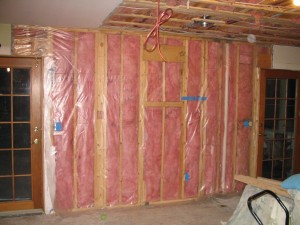
A Well-Insulated House
A well-insulated house, free from air leaks is warmer in the winter, cooler in the summer, and quieter year-round. The end result is less energy is needed!
Whenever given the option on adding house insulation choose more over less, BUT make sure you take the time to seal air leaks first.
Adding Insulation And Air Leak Sealing
Checking your house’s insulation is one of the easiest and most cost-effective ways to reduce energy waste and save on energy bills. A good insulating system includes a combination of products and construction techniques that protect a home from outside hot or cold temperatures, protect it against air leaks, and control moisture.
You can increase the comfort of your house, reduce heating and cooling bills by adding proper insulation where needed and learning how to seal air leaks.
Adding House Insulation
- You have an older home and haven’t added insulation. Only 20% of homes built before 1980 are well insulated.
- You are uncomfortably cold in the winter or hot in the summer—adding insulation creates a more uniform temperature.
- You build a new home, addition, renovate or install new siding or roofing.
- You have high energy bills.
Look To The Attic
One of the key areas to think about adding house insulation to is the attic.
Make sure your attic is well insulated with at least 12 inches of fiberglass batt insulation or loose insulation on the floor. Fill in any gaps you find but keep the insulation at least 3 inches away from fixtures electrical sockets, recessed light fixtures, ridge and sofit vents.
Pull-down staircases with access the attic can have weather-stripping installed around the edges and covered with rigid insulation.

